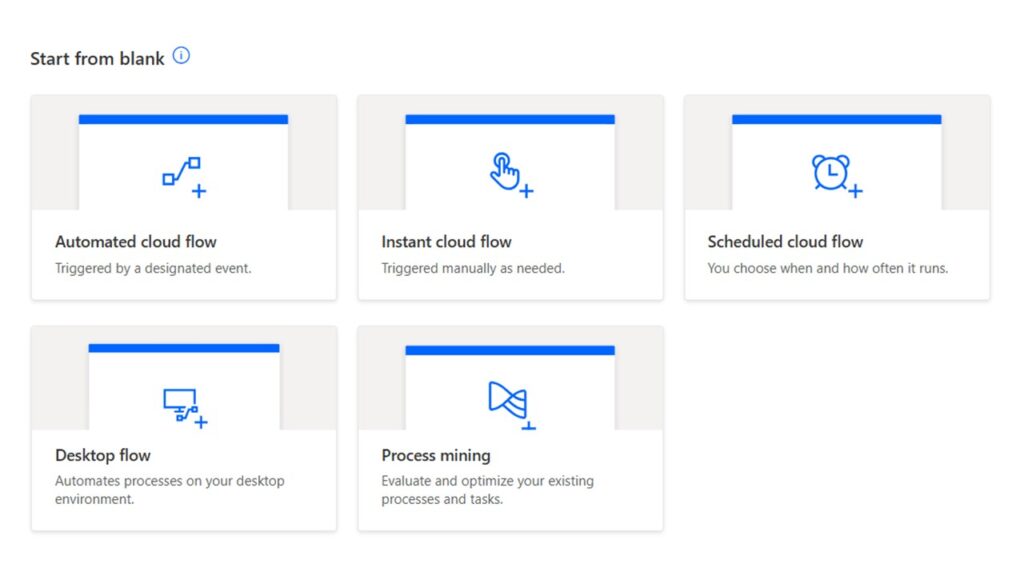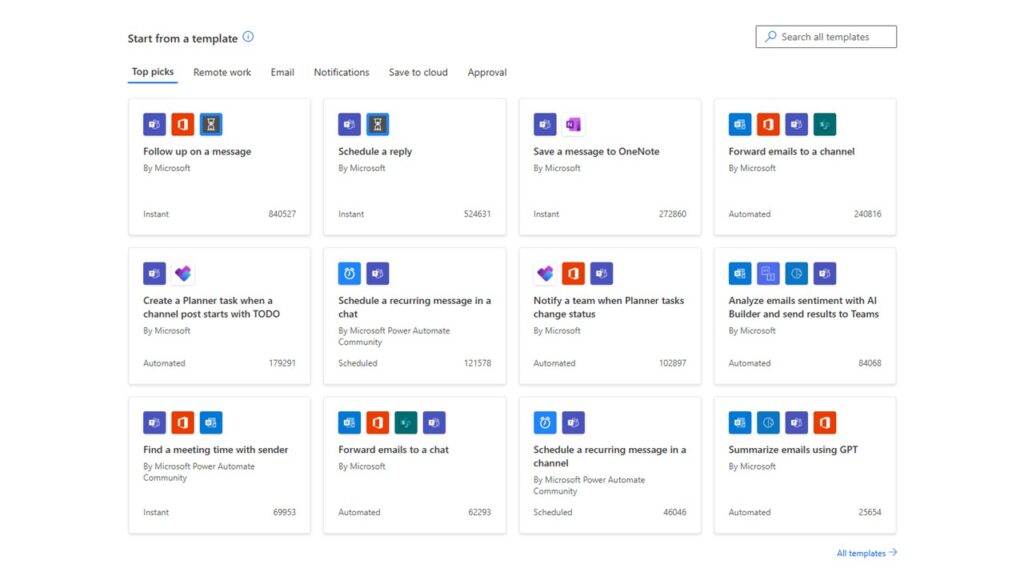Get Started On Microsoft Power Automate
What is Microsoft Power Automate?
Microsoft Power Automate, previously known as Microsoft Flow, is a cloud-based service that helps users automate repetitive tasks and workflows across various applications and services.
It supports a wide range of automation—from simple actions like sending email alerts to more advanced processes such as data collection and file synchronization.
Organizations leverage Power Automate to enhance productivity, streamline operations, and reduce operational costs by automating routine business processes.
With Power Automate, you can connect to over 500 services, including both Microsoft and third-party platforms such as Microsoft Teams, Forms, Planner, SQL Server, Power BI, Azure DevOps, Gmail, Twitter (X), Trello, Dropbox, Slack, GitHub, YouTube, Salesforce, and more.
There are three ways to make a flow in Microsoft Power Automate.
1. Start from blank

Microsoft enables you to build custom flows from the ground up to suit your specific business needs. Here are some types of flows you can start with:
- Automated cloud flow – Triggers automatically based on a specific event.
- Instant cloud flow – Runs on demand with the click of a button.
- Scheduled cloud flow – Executes at set times or intervals.
- Desktop flow – Automates tasks on your local machine using robotic process automation (RPA).
2. Start from a template
Microsoft offers over 500 ready-to-use templates to help you get started quickly, while also allowing for full customization to meet your specific needs. Some example templates include:
- Create a Planner task when a channel message begins with “TODO”
- Notify your team when the status of a Planner task changes
- Send an email when a new tweet containing a specific keyword is posted
- Automatically email a responder after they submit a Microsoft Forms response
- Send an email notification when a new item is added to SharePoint

3. Start from a connector
You can also initiate a flow directly from a connector. Connectors are essentially the everyday apps and services you use. With over 500 connectors available, you have a wide range of options to choose from. Some examples include:
- Office 365 Outlook
- SharePoint
- Microsoft Dataverse
- OneDrive for Business
- Microsoft Forms
- Planner
- Microsoft Teams
- Outlook.com
